9 Nights / 10 Days
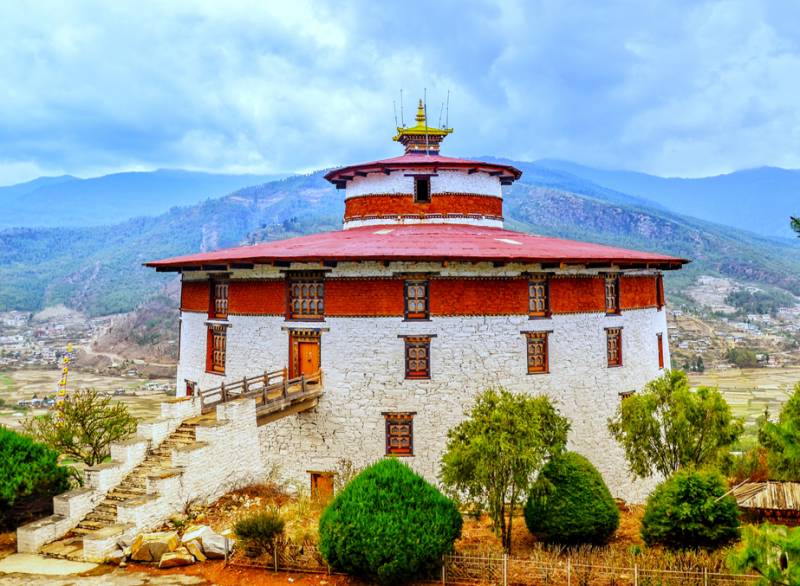
Arrive in Paro by flight (From Bangkok, Kathmandu, Kolkata, Bagdogra or Delhi). Upon arrival in Paro, you are met and transferred to Thimphu, the capital (1hour drive east) and spend 2 nights. During our stay here, sightseeing will include visiting colorful farmer’s market, Tashicho Dzong, Memorial Chorten, Traditional Art school, Indigenous hospital, Takin Sanctuary, Dupthop Nunnery at Zilukha, Simtokha Dzong, Hand-made paper factory, Handicraft workshops etc. We will also a host a special dinner inviting some of the local Bhutanese officials depending on the groups interests. The group will also have the time to stroll and browse Thimphu’s shops. Overnight in Thimphu.
Thimphu
Thimphu is the capital of Bhutan, and also the name of the valley and Dzongkhag or district. With estimated population of around 100,000, Thimphu is Bhutan's largest city. Thimphu valley is at an average elevation of 2300m. It was a wooded farming valley until 1951, when massive 17th century Fortress, Tashicho Dzong, was revamped by King Jigme Dorji Wangchuk to form Bhutan's official capital and replace the ancient capital of Punakha. Today the city sprawls across the western slopes of the Wang Chuu river valley, with several government offices located around Tashichoe dzong. Rapid expansion following the pattern of rural exodus has resulted in considerable rebuilding in the city centre and mushrooming suburban development elsewhere. Norzin Lam, the recently upgraded main thoroughfare, is lined with shops, restaurants, retail arcades and public buildings. Elsewhere, there is a mix of apartment blocks, small family homes and family-owned stores. By regulation, all buildings are required to be designed in traditional style with Buddhist paintings and motifs. A lively weekend market (now open all days of the week) near the river supplies meat, vegetables and tourist items. Most of the city's limited light industry is located south of the main bridge. Thimphu has a growing number of commercial services and offices which provide for ever-growing local needs. Thimphu is one of national capitals that do not have traffic lights. Instead of traffic lights, traffic police directs the oncoming traffic with their dance-like movement of their arms and hands. The Memorial Chorten dominates the skyline of Thimphu. The Buddha Dordenma statue, to be the largest Buddha statue in the world, is under construction on a ridge top, overlooking the city.
Tashichho Dzong
Tashichoedzong, meaning the fortress of "auspicious doctrine" has traditionally been the seat of the Dharma Raja and summer capital of the country. The original Thimphu dzong was built in 1216 by Lama Gyalwa Lhanangpa, above the present Dzong, where Dechen Phodrang now stands. Soon after, Lama Phajo Drukgom Shigpo, who first brought the Drukpa Kagyu lineage to Bhutan, took it over. In 1641 Shabdrung Ngawang Namgyal acquired it from Lama Phajo's descendants, but soon finding it too small, he built the present Tashicho Dzong and called it a lower Dzong. In 1771, when Dechen Phodrang was destroyed by fire, everything was moved to the lower Dzong, which was expanded then, and again by the 13th Druk Desi (1744-1763), and further expanded in 1866. It was damaged during an earthquake of 1897 and rebuilt in 1902. King Jigme Dorji Wangchuck had it completely renovated and enlarged over five years after he moved the capital to Thimphu in 1952 in traditional style using neither nails nor written plans. Presently it houses the throne room and offices of the king, the secretariat and the ministries of home affairs and finance. Other government departments are housed in buildings nearby. The main structure of the Tashichoe Dzong is two-storied with four three-storied towers at each corner, topped by triple-tiered golden roofs. In the center of the building is a large central tower called utse. This fortress serves as the office of the King, ministers and various government organizations. It also is the headquarters for central monastic body of Bhutan. Bhutan's spiritual leader Je-Khenpo and the monks of both Thimphu and Punakha reside here during summer.Thimphu Festival, traditionally held here, has been moved outside in a new courtyard.
In Thimphu, start sightseeing with visit to a Nunnery on the outskirts of Thimpu. You will then visit the School of Arts and Crafts (or "painting school"), where Bhutanese children can follow an eight-year program in traditional arts, such as drawing, painting, woodcarving, and sculpture. This will be followed by a visit to Textile Museum, the Heritage Museum, Changgangkha Lhakhang (temple), national Library, Traditional Hospital and see how paper is made from the daphne plant with cosmos flower petals and other plants. At the end of the day, we may also pay a visit to the great Tashichho Dzong, seat of Bhutan's administrative and religious centre. Overnight in Thimphu.
Drive east (3hrs) on a spectacular road over Dochula pass (3050m) and descend into low lying Wangdu valley. Then drive up the Black-mountains area into Phojikha valley (2hrs). En-route; at Dochula pass, we stop to view the panorama of east Himalayan peaks. In Wangdue, stop to stroll around its interesting township and also stop to view villages, vegetations etc. along the way to Phobjikha. In the afternoon, visit the ancient Gangtey monastery and take a nature in the valley (1-2hours).
(Due to conservation measure, there is no electricity in the valley. The hotel uses generator during the evenings and it is turned off after dinner. Hot water is provided in the bucket). From the mid October till about mid-march, Phobjikha valley is the winter roosting ground for the rare and endangered black-necked cranes.) Overnight in Phobjikha.
Gangtey in Phobjikha Valley
Gangtey or Phobjikha at an average altitude of 3,000m is a wide and beautiful valley, designated as conservation zone within the Jigme Singye Wangchuk National Park (formerly known as Black Mountains National Park) is a natural habitat for wildlife, including nesting grounds for endangered black-necked cranes that migrate from Central Asia in the winter (late October and stay till March). Because of the conservation measures, there is no electricity in the valley. The lodges use solar powered cells or generator to light which is turned of after dinner. Hot water is provided in the bucket and rooms are heated with wood stoves. Underground electrification is planned and expected to be completed by 2011. Gangtey is the name for hilltop village and its monastery. The valley is known as Phobjikha and falls under Wangdue Dzongkhag.
Gangtey Gompa Monastery
sits atop a hillock that overlooks the Phobjikha valley. It is headed by the ninth Gangtey Trulku and is the largest Nyingma monastery in western Bhutan. It was founded in 1613 by Gyalse Pema Thinlay, a grandson and reincarnation of influential treasure finder Pema Lingpa. An incarnate line of Pema Thinlay, representing the body aspects of Pema Lingpa, contrasted with mind and speech emanations. The monastery has been recently built and surrounding the monastery are village homes and hermitages.
Black-necked Crane
or Thrung Trung Karmo' as this bird is passionately known in Bhutan is subject of many Bhutanese songs and folklore. They are seen among the painting on the walls of temples and Thankga. These endangered species of cranes migrate from Tibet in late autumn and typically stay till the mid march. The wetland in the center of Phobjikha valley provides the nesting grounds and natural habitat for these black necked cranes. Black Necked Crane Information Centre is situated on the edge of the forest and wetland along the main road of Phobjikha valley, has an observation room equipped with high power telescope and spotting scopes for catching the best view of the cranes. The centre also offers display information that outline the natural and cultural history of the area. There is a small gift shop, which sells handicrafts produced by the local people, that local people can benefit from ecotourism.
Early this morning, we drive east across Pele la pass to Trongsa (2-3hr) and continue drive across Youtongla pass into Jakar in Bumthang (2hr). Here, we will spend 3 nights. Overnight in Bumthang.
Bumthang
Bumthang is one the most historic district, if the number of ancient temples and sacred sites is counted, and therefore it is sometimes called the spiritual and cultural heartland of Bhutan. Bumthang consists of the four valleys of Ura, Chumey, Tang and Choekhor, although often the entire district is known as Bumthang. Jakar town (2800m) is located in spacious tree covered Choekhor valley and is the capital, and center of four valleys of Bumthang district. Almost all the hotels are also located here and most significant Buddhist sites are also located nearby. The current bazaar or town is a single lane street of mostly wooden houses and the area called Chamkhar. There are plans to relocate the town. Bumthang is famous throughout Bhutan for its distinctive and brightly colored woven wool items called Yathra. Bumthang farms yield buckwheat, dairy products, honey and apples among other products. The Bumthangkha is the widely spoken dialect here and differs from Dzongkha and other dialects spoken in the rest of the country
Bumthang is rightfully known as the cultural heart of the Bhutan with many temples, cultural sites located within its four valleys. One full day will be spent in and around the Jakar, to tour by short walks and short drives to visit its ancient temples, monasteries, farms, local schools, palaces and villages. We will also sample some local food such as Buckwheat noodles. Next day, we will drive for about 2hours towards Ura or Tang valley depending on the weather and other circumstances. While, there we will take a walk to visit local village etc and return to Jakar for overnight.
Overnight in Bumthang.
Retrace on this long and spectacular drive back to western Bhutan, re-crossing Yutong la pass. Visit Trongsa Chokhor Dzong, one of the most impressive and spectacularly located fortress/ monastery in the country. Overnight in Trongsa.
Drive to Punakha which will take 5 hours, enroute visit Rinchengang village situated on the sloppy hillside and unique in Bhutan. Later we can take another short walk through villages to visit Chimi Lhakhang temple, dedicated to saint Drukpa Kuenley, affectionately known as “the divine madman”, for his unconventional ways of teaching using dirty jokes. We also have time in between to visit local school and villages.
Overight in Punakha.
Drive through the idyllic countryside north of Punakha and trek for about (½ hr each way) to visit Khamsum Yeulley Chorten temple. In addition to its great art-works, there walk to and from is interesting through the paddies and village and the view is also magnificent. Visit the impressive Punakha Dzong, located at the confluence of Pho and Mochu rivers.
Afternoon we have one more opportunity to see the incredible mountain views from Dochula pass. The areas around the pass are also rich in flora and fauna.
Overnight in Paro.
Punakha Dzong
Its proper name is Pungthang Dechen Phodrang, which means the Palace of Great Happiness. The Dzong is located on the confluence of Phochu and Mochu rivers and was constructed by Zhabdrung Ngawang Namgyal in 1637-38 near Dzongchung or the little Dzong, built in 1328 by Ngagi Rinchen (which can be still seen opposite the main Dzong). The Dzong was damaged by flood, earth quake and several times by fire and was rebuilt each time to its original grandeur. The Dzong houses the most sacred relics of the Drukpa Kagyu school including the Rangjung Kasarpani, and the mummified remains of Zhabdrung Zhabdrung Ngawang Namgyal, who passed away here in 1651. In 1907 (on 17 Dec) Punakha Dzong was the site of the coronation of Ugyen Wangchuck as the first King of Bhutan. It is the district administrative center of Punakha Dzongkhag and the winter home of Bhutan's Central Monastic Body led by HH the Je Khenpo (Chief Abbot).
Khamsum Yuley Chorten
Khamsum Yuley Namgay Chorten was built in 1990s and took period of nearly 10 years. It was built by Queen Mother and dedicated to the King and for the well being of Bhutanese. It majestically located on a ridge, with amazing views of the country side. It is one of the finest Bhutanese architects. It is located in idyllic countryside north of Punakha, about 30 minutes drive from town. From the parking, it is another 45 minutes uphill walk through the rice fields and the return portion downhill takes around 30 minutes. In the summer or during the rainfall, the trails could be muddy and slippery. After return walk back, there is an option to walk along the riverside, following the ancient trail that goes through farmlands, homes, Sonagasa village and arrive near Punakha Dzong. This extra walk takes another two hours or so. It is particularly interesting for those interested in birding and to enjoy the walk viewing the countryside.
As you will have by now covered more grounds on foot and well acclimated, we hope to take you bit beyond what regular tourist generally cover; that is to hike to Takstang.
Paro
The small and charming town of Paro (2280m) lies in the center of the valley, on the bank of Pa Chhu River. Paro town was first formed in 1985 with one main street, lined with colorfully painted shops. Of recent, new constructions have taken place on the back of the main street shops. The head quarter of Paro district is located in nearby Rinphung Dzong. Bhutan's international airport is also located here and the capital is just over 1hour away. Paro is known to be most fertile valley. It is one of the most historic valleys in Bhutan. Both trade goods and invading Tibetans came over the pass at the head of the valley, making Paro the closest cultural connection with Tibet of any Bhutanese district. Paro is one of the most tranquil and beautiful valley in Bhutan.
Taktshang - Tiger's Nest
Taktshang or 'Tiger's Nest' as it is often referred to for Taktshang Pelphung monastery, is one of the most venerated and famous of Bhutan's monasteries. It is located on the face of a 900m sheer cliff. It is an impressive and unmissable site, but accessible only by walk or to ride mules/pony. From the trail head at Rumtokto (2600m), the walk till the Cafeteria is a steep one hour uphill (about 350m ascent). From the Cafeteria (2940m), one can get a good close-up view of Taktshang. Savor views of the monastery over a well deserved cup of tea and biscuits at the cafeteria and continue uphill for another 45 minutes to a high observation point (3140m) where there is a Chorten. From this vantage point, the lookout to the monastery is a very spectacular and seems almost close enough to touch. It is now on the other side of a deep chasm, only around 150m away as bird flies, but takes half hour or even more to reach. Continue down the flight of cliff-hanging steps on the narrow trail to a beautiful waterfall that plunges down the deep chasm and alongside is a retreat hermitage, jammed dramatically into a rock crevice. Then climb up the flight of steep steps to the monastery. At any point on this walk, you can always return if you find it too difficult. Once inside the monastery, there are several shrines or temples with few monks in residence. After visiting Taktshang monastery's many shrines, most tours schedule lunch at the Cafeteria upon return. After lunch, retrace back to the road-head where you started in the morning. The return from Cafeteria is all downhill and takes just over half hour. Further, if you have more time, energy and ready for more challenging day, you can start early and trek beyond Takstang to see several monasteries, temples, retreat houses in the surrounding area. The most notable among them are Zangdopelri and Ugyen Tsemo.
Pony/horse can be hired for ride up till the Cafeteria. However you cannot ride beyond the cafeteria or come down hill on the horse. According to the legend, Guru Padmasambhava or Guru Rinpoche, who spread the Buddhism across the entire Himalayas is said to have flown here in the 8th century on the back of a Tigress, in order to subdue negative spiritual forces that were hostile to spread of Buddhism. In 853, one of his students, Pelgyi Senge mediated here in the main cave. The stupa inside one of the temples contains his mortal remains and therefore the cave is known as 'Pelphung or Pelgi's cave'. Subsequently many great spiritual masters such as Milarepa, Thangthong Gyalpo, Phajo Dugom Zhigpo, Shadrung and many others, passed periods here in profound meditation. In 1692, Tenzin Rabgye built a two storey temple around what little may have existed previously. This was expanded and refurbished many times over the period of time. Taktshang and several temples in the area were burnt down in 1951 by fire accident but much of them remained intact and most of the relics were saved. Soon after, the, Taktshang was rebuilt by population of Tsento village. Again in April of 1998, a major fire destroyed the main structure of the building and its contents (some believe it to be arson). Reconstruction began in 2000 and was completed and consecrated after extensive efforts and financial support of Governments as well as donors.
Paro Rinpung Dzong
Rinphung Dzong was consecrated in 1645 by Shabdrung Nawang Namgyal on the site of smaller fort. Throughout the 17th and 18th centuries it served as a bastion against invasion from the north. It is regarded as one of the finest Bhutanese architecture - with intricate wood work, large beams slotted into each other and held together without nails. In it houses the giant 30m X 45m Thangka (Thongdrol), commissioned in mid 18th century, displayed on the last day of Paro Tsechu festival. Rinphung Dzong is the district headquarter of Paro and residence of state monks under Paro rabdey.
National Museum of Bhutan
Established in 1967, the museum is housed inside a circular Ta Dzong, an ancient watchtower. It has fascinating collection of arts, relics, religious thangkha paintings, households stuffs, arms, handicrafts, stuffed animals and Bhutan's famous Stamps among others (open 10-4pm - closed on Monday).
Transfer to the airport in time for your departure flight.
The travel possibilities in Jaigaon, West Bengal, and our specialised knowledge are what we at Galaxy Adventures Tour are most eager to share with you. You will be helped in understanding the island's breathtaking beauty, extensive history, and the passions and interests of its citizens by our small but knowledgeable staff of tour guides and drivers.
You can relax knowing that your holiday will be great whether you use our services for transportation or excursions because of our in-depth familiarity with the rugged environment, technical genius, and years of experience providing first-rate customer care.
We work hard to go above and beyond for you to keep you returning to encounter our travel adventures. We ask you to come on vacation with us so you can see the improvements for yourself.
Our Mentor:
Galaxy Adventures Tour is conducted by owner Kunal Sarkar in Jaigaon, West Bengal. His direction makes sure that the organization's goals are rigorously controlled and observed. The company has gained notoriety in the travel industry by offering customers the best travel services at reasonable pricing.
Our Values:
The hallmark of SHREEJI TOURS AND TRAVELS is its attentive personnel, which is constantly on hand to help visitors make the most of their stays. Our ability to function depends on the visitor.
Our Policy:
We are the go-to resource for outings that improve communities, protect the environment, and foster growth. We provide you with all the tools you require to ensure that your travels are consistent with your views, including studies and breakthroughs, best travel practices, the appropriate gear, and destinations and organisations with exceptional dedication to attracting visitors.
Read More...

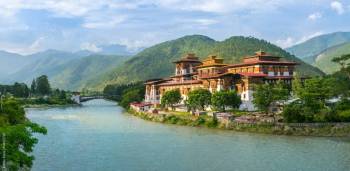 8D/7N
8D/7N
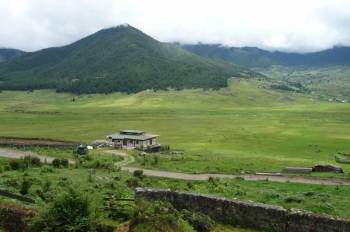 15D/14N
15D/14N
Thimphu - Paro - Punakha - Mongar - Bumthang - Samdrup Jongkhar
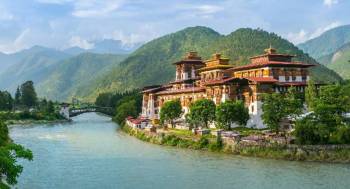 6D/5N
6D/5N
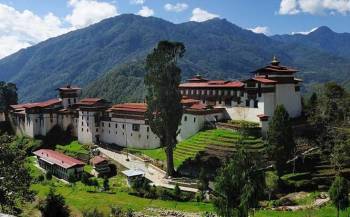 7D/6N
7D/6N
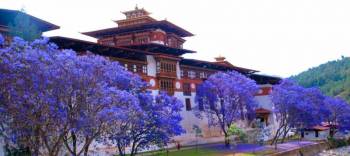 15D/14N
15D/14N
IXB To IXB 14 Nights - 15 Days
Thimphu - Paro - Punakha - Bumthang - Phuentsholing
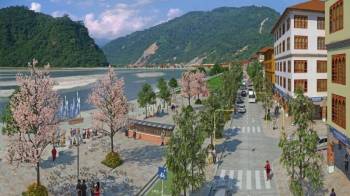 9D/8N
9D/8N
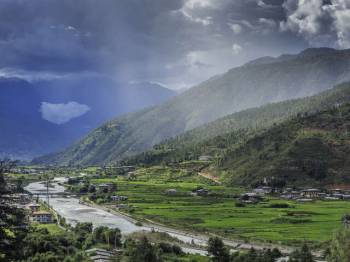 5D/4N
5D/4N
Hasimara To Hasimara 4 Nights 5 Days
Thimphu - Paro - Punakha - Phuentsholing
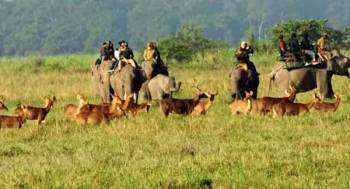 10D/9N
10D/9N
Experience Sangai Of Manipur And Hornbil..
Jorhat - Imphal - Kohima - Kaziranga
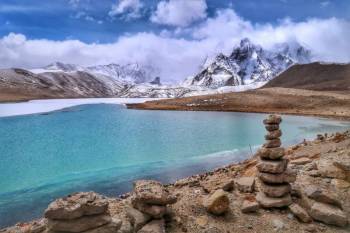 6D/5N
6D/5N
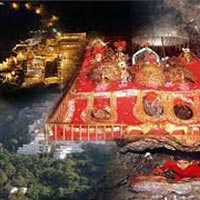 10D/9N
10D/9N
Srinagar - Anantnag - Patnitop - Jammu - Baramulla
 10D/9N
10D/9N
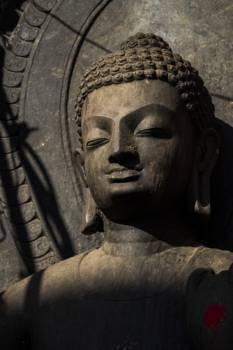 10D/9N
10D/9N
New Delhi - Varanasi - Bodhgaya - Rajgir - Nalanda - Patna - Vaishali - Kushinagar ..
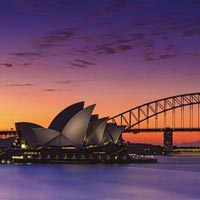 10D/9N
10D/9N
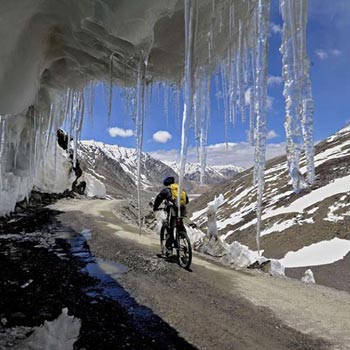 10D/9N
10D/9N
Kinnaur - Kaza - Spiti Romantic Package
Chandigarh City - Shimla - Kinnaur - Kaza - Digboi
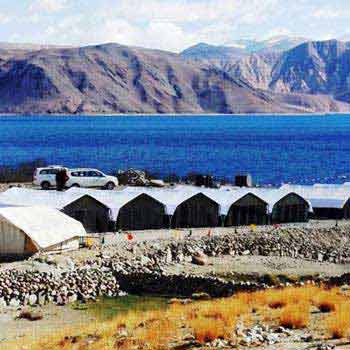 10D/9N
10D/9N
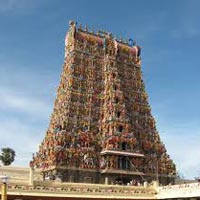 10D/9N
10D/9N
South India - Kerala & Tamil nadu- 9 N/1..
Kovalam - Munnar - Alleppey - Madurai - Kochi - Kumarakom Thekkady
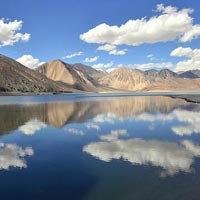 10D/9N
10D/9N
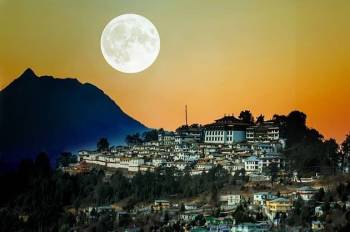 10D/9N
10D/9N
Tawang Kaziranga Shillong Tour
Guwahati - Shillong - Tawang - Kaziranga - Cherrapunji
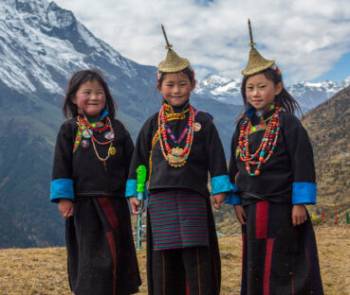 5D/4N
5D/4N
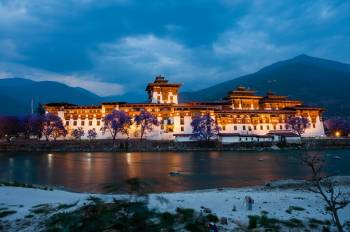 7D/6N
7D/6N
6 Nights/ 7 Days - Bhutan Happiness Tour
Punakha - Bumthang - Paro - Thimphu - Phobjik
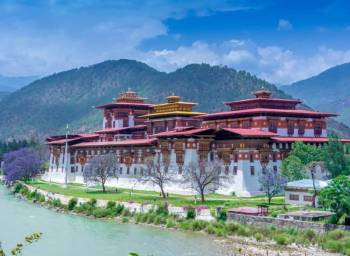 7D/6N
7D/6N
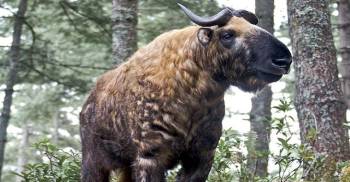 20D/19N
20D/19N
20 Days Land Package Country Tour Bhutan..
Punakha - Paro - Phuntsholing - Bagdogra - Bumthang - Mongar - Trashigang - Trongsa..
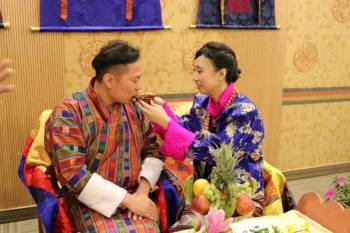 4D/3N
4D/3N
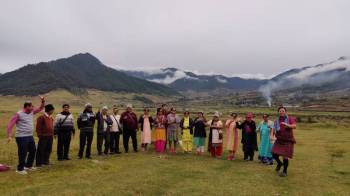 6D/5N
6D/5N
 7D/6N
7D/6N